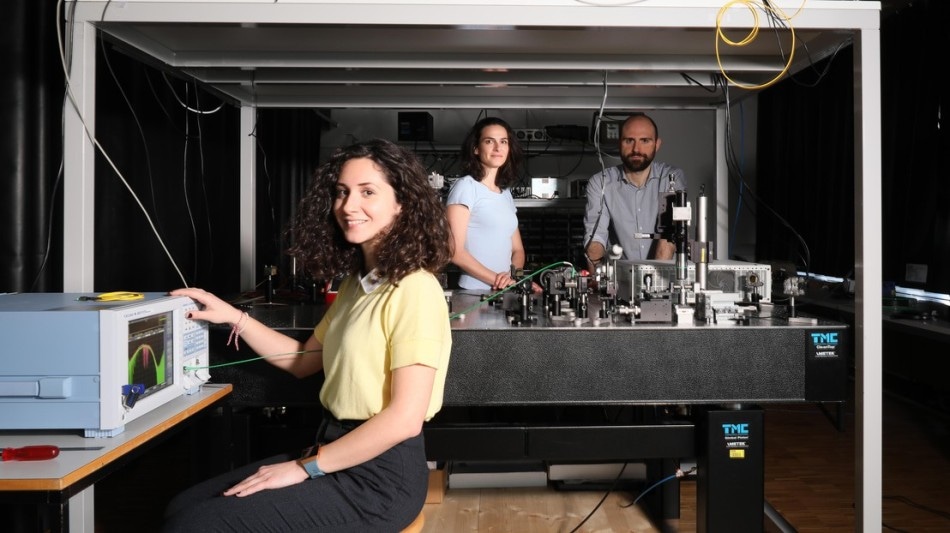Apr 5 2019
EPFL researchers have created a unique middle infrared light source that is capable of detecting greenhouse and other kinds of gases, and also molecules present in a person’s breath.
 Eirini Tagkoudi, Camille Brès, and Davide Grassani, Ecole Polytechnique Fédérale de Lausanne (Image credit: Alain Herzog/EPFL)
Eirini Tagkoudi, Camille Brès, and Davide Grassani, Ecole Polytechnique Fédérale de Lausanne (Image credit: Alain Herzog/EPFL)
Resembling a small suitcase, the compact system includes only two components—a traditional laser along with a photonic chip, which measures only a few millimeters across. The results of the study have been described in an article reported in Nature Communications.
Scientists, in particular, can benefit from the mid-infrared spectrum because light, at this wavelength range, can easily detect particles that have a significant role to play both in human health and in the environment. However, so far, it has been difficult to transport infrared laser systems as they involve damage-prone and intricate hardware.
The innovative technology, devised by the EPFL team, could be a game-changer. The researchers took a micrometer waveguide chip and integrated it with a commercially available fiber laser to consistently emit light waves in the mid-infrared spectrum. Next, they added a spectrometer to show the capacity of this light source, effectively identifying the presence and concentration of a highly flammable and colorless gas—acetylene.
How does it work?
A robust and compact fiber laser that generates light in a particular wavelength range is used by the system. The beam is aimed via a waveguide, measuring half a millimeter long and 1 µm (0.001 mm) across, which is capable of changing the frequency of the light as it travels through. When the system emits light in the mid-infrared spectrum, it can retain as much as 30% of the original signal strength. The wavelength of the light can also be tuned by adjusting the geometry of the waveguide.
“This device sets a new benchmark for efficiency,” stated Davide Grassani, one of the study authors. “This is the first time anyone has created a fully integrated spectroscopic laser source. It does away with the painstaking process of precisely aligning all the parts in a conventional laser system.”
The actual innovation happened after the researchers improved the major aspects of the system’s design—the wavelength of the original laser source as well as the material and waveguide geometry.
Coming up with such a simple yet efficient and sturdy system involved a lot of design work.
Camille Brès, Project Coordinator and Head, Photonic Systems Laboratory, School of Engineering, EPFL.
On-chip spectroscopy
This development holds major implications for ultra-small mid-IR technologies—a wavelength range that investigators seldom get to work with.
Once we’ve developed the system further, we could well see on-chip detectors that scientists can easily carry out into the field.
Camille Brès, Project Coordinator and Head, Photonic Systems Laboratory, School of Engineering, EPFL.
The new technology is based on studies performed at the Photonic Systems Laboratory, led by Camille Brès, and the Laboratory of Photonics and Quantum Measurements, led by Tobias Kippenberg (STI/SB).